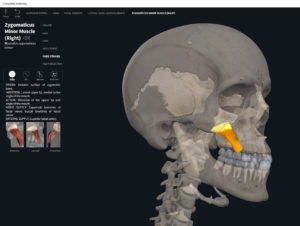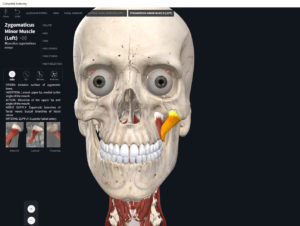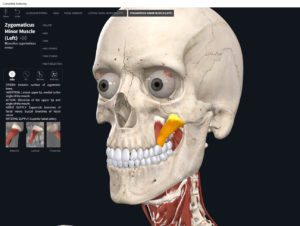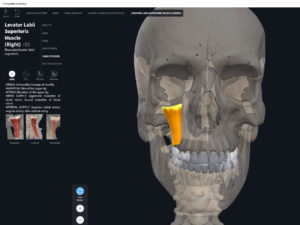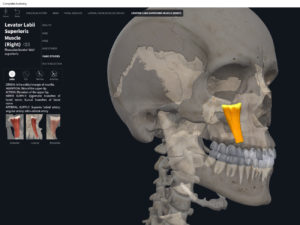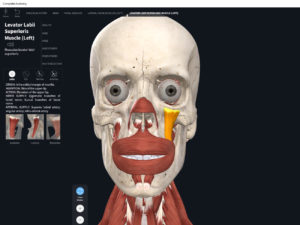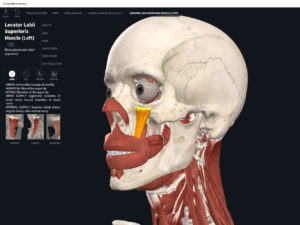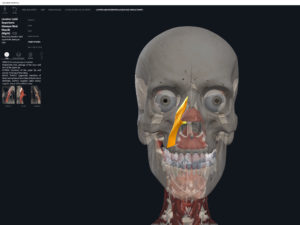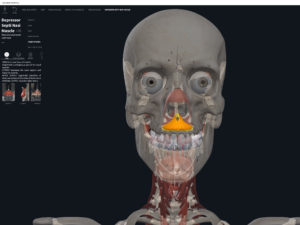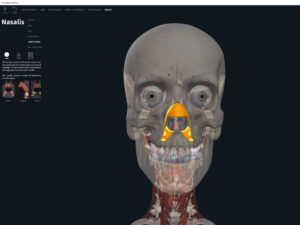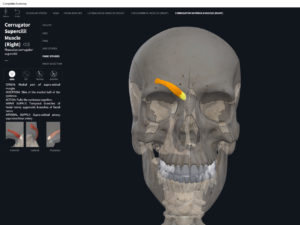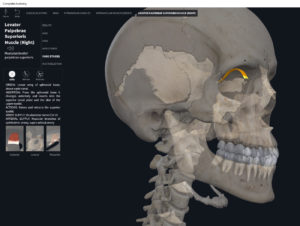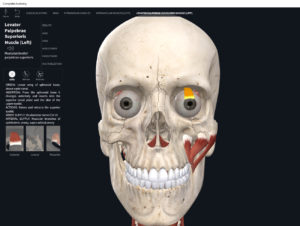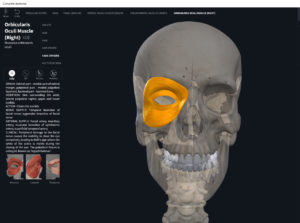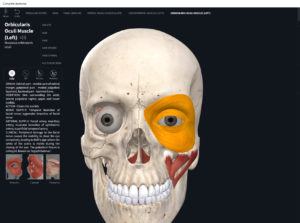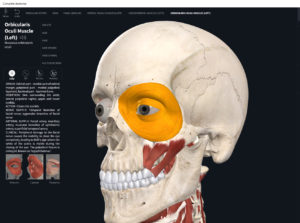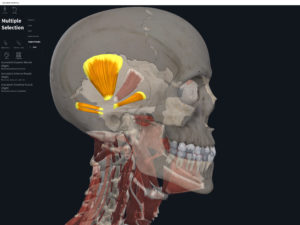Anatomy & Physiology: Muscles—Zygomaticus Minor.
Structure.
- Origin: zygomatic bone.
- Insertion: upper lip.
- Superficial.
Function.
- Concentric action: raises (elevates) upper lip exposing maxillary teeth.
- Eccentric action:
- Isometric action:
- Innervation: facial VII nerve.
- Arterial supply: facial artery.
- “Toothy grin”.
Clinical Significance.
More.
- http://anatomyzone.com/tutorials/musculoskeletal/muscles-of-facial-expression/
- https://www.anatomynext.com/zygomaticus-minor/
References
Biel, A. (2015). Trail guide to the body: A hands-on guide to locating muscles, bones and more.
Clark, M., Lucett, S., Sutton, B. G., & National Academy of Sports Medicine. (2014). NASM essentials of corrective exercise training. Burlington, MA: Jones & Bartlett Learning.
Jenkins, G., & Tortora, G. J. (2012). Anatomy and Physiology: From Science to Life, 3rd Edition International Stu. John Wiley & Sons.
Muscolino, J. E. (2017). The muscular system manual: The skeletal muscles of the human body.

